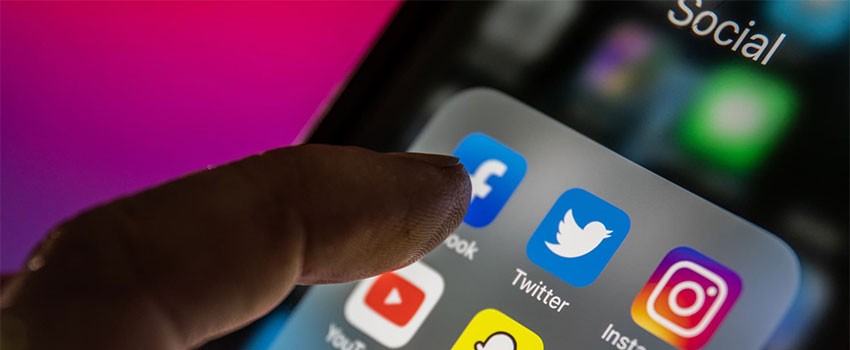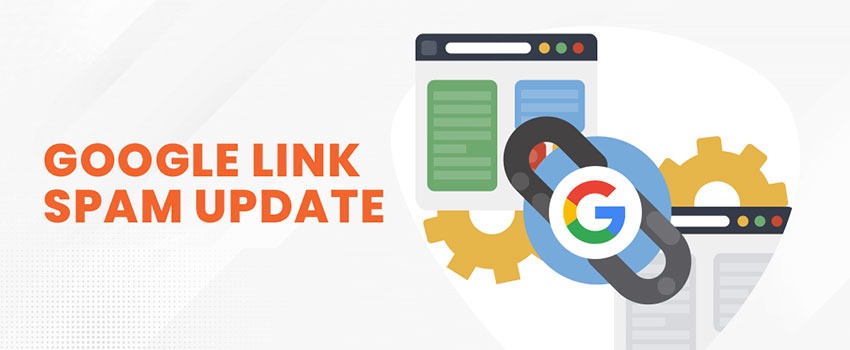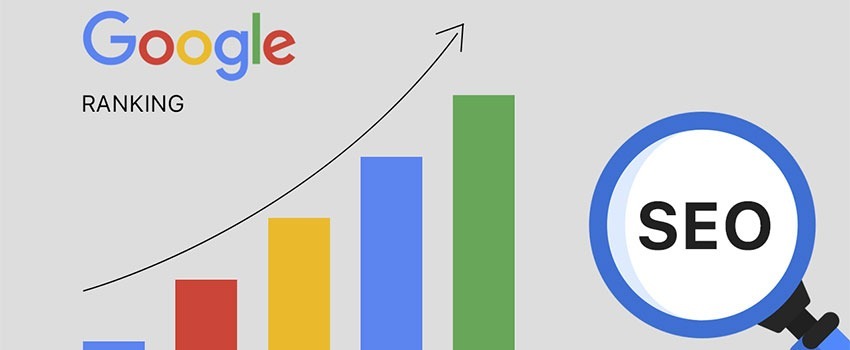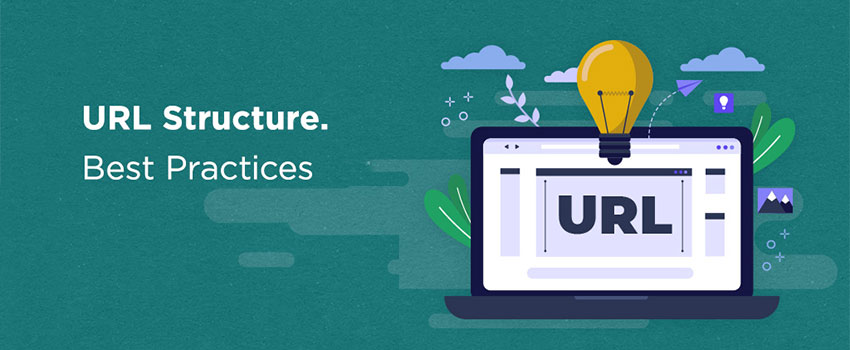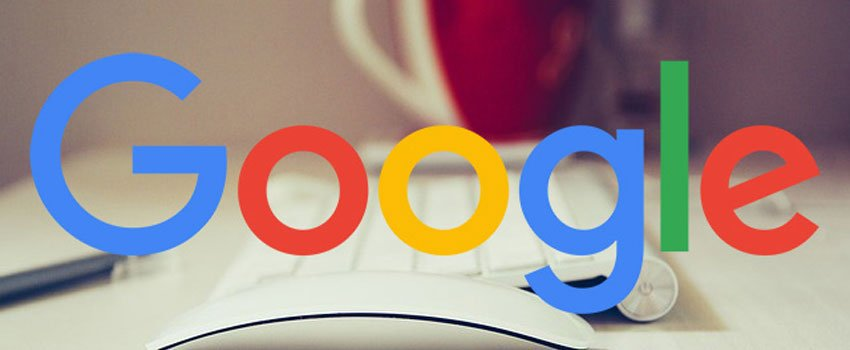New Business Startup Considerations and Success Factors
Quite often, people start new businesses only to find that much of the decisions they have taken wrong decisions on marketing, human resources, and finance,
In most cases, these wrong decisions had been based on wrong data, information or a weak understanding of the challenges ahead.
In this post, we take a general look at what should basically be considered before starting a small business. We also examine the layout considerations necessary for launching a business website. We start with the basic marketing considerations necessary for new business analysis.
Read more from our blog:
- Website Security Guide For Shared Hosting
- Copywriting That Help Website Performance
- How to Set Up Your Personal Blog With Joomla
- How to Prevent Your Website From Exploitation
- Build Your Website With The Right Tool
1. Basic Marketing Considerations
There are two basic justifications for the establishment of a new business. The first is an expanding market; the second is the existence of inefficient firms. As a business owner, looking out for these two considerations may be very challenging and difficult especially if the indices for measuring market expansion and inefficiency are not well known to you, not clear, or difficult to determine. In less developed economies, statistics on market expansion, new entrants, buyer behavior, and company performance are virtually non-existent. Yet, business owners must decide on these issues before they start.
One way to go about it therefore is to conduct primary research. Such researches should asses the business layout and physical environment, the customer’s assessment of the business and their propensity to switch, the possible reason why they could switch, their assessment of the product quality, if the product is imported, then the customer’ perception of the country of product origin must be made relative to quality, durability, and warranties.
It is also important to conduct detailed studies into the pricing policies of existing businesses, determine any previous price wars and what sparked it up, determine customers’ perception of the current pricing mechanisms, and evaluate one’s own capabilities relative to competitors. This assessment might enable decision on which market to serve profitably without any serious collusion with major competitors.
The business owner must also decide on how to cope with the promotional needs and to distribute products efficiently. He will need to choose among the legally allowable promotional methods or a contribution of promotional techniques. However, it must take into consideration the cost of promotion and its impact on overall performance. Decisions relating to the distribution policy have to be taken with reference to the behavior of customers and competitors’ distribution practices. There is a growing increase in personal and home delivery service.
If middlemen have to be used, choosing them will be influenced by their ability to meet producer’s. distribution targets, their ability to provide adequate customer support, and handle such problems as cognitive dissonance, rejections and other complaints.
Read more from our blog:
Build Your Website With The Right Tool
Do Google Ads Affect Search Engine Rankings?
Corporate Positioning and Layout Considerations
The concept of “CORPORATE POSITIONING” had being widely used in the areas of external communication, corporate imagery, and market leadership. Sometimes its presentation through advertising creates a gap between the message and the customer perception based on real life experiences. Layout design is one way of harmonizing customers’ perception with the business positioning strategy.
A business that is well located and sited has some clear advantages. Its chances of getting sales from primary demand are higher. Secondly, It could rely on its layout strategies to win loyal customers. This concept is however strongly related, though not exclusive, to retailing. Site analysis is important especially in retailing because the site must first be accessible. Marketing studies have shown that automobile traffic is not a true measure of a site’s value otherwise all retailers would be located on major roads. Pedestrian traffic are also very important. Personal interviews, store traffic studies, and a survey of transportation facilities can provide valued information in these areas. Parking space is an important aspect of site consideration, its importance seems to be increasing as more shops now value and seeks to have parking spaces.
Also read: How to Set Up Your Personal Blog With Joomla
Positioning strategy
Positioning strategy simply refers to stating to customers what a product means, and how it differs from current and potential competing products. This distinction could be established through the product attribute, price/quality, application , product, user, or product class.
In doing this, there is always the danger of confused positioning where buyers are unsure of what the company stands for, over-positioning where customers perceive the product as being expensive and fail to recognize the full breadth of the range; and over-positioning where the message is simply too vague and consumers have little real idea of what the organization stands for.
In this respect, Kotler and Keller (2006) advice: The best positioning strategy will create some points-of-difference. These are attributes or benefits consumers strongly associate with a brand, positively evaluate, and believe that they could not find to the same extent with a competitive brand. Positioning strategy also seek to associate one’s offering with highly rated brands thereby seeking to enjoy the preference consumers attach to such brands (points-of-parity).
“if a company does an excellent job of positioning, then it can work out the rest of its market planning and differentiation from its positioning strategy”. Positioning to them is designing the company’s offering and image to occupy a distinctive place in the mind of the target market.
It is not enough to plan a positioning strategy, communicate to customers, and attract customers to the brand, store or place of purchase. The desired positioning strategy must reflect in the product brand or store. In a study conducted on retail outlet over 60 percent of the stores do not represent their product positioning strategy. A major point of disparity was their layout strategy. The business failed in some respect to present the image, quality, and services elements which their advertising communicates.
Most business boasts of prompt service, quality products, and courteous personnel. Once this becomes the company’s positioning strategy, management must ensure that customers get just that. Any deviation will send a wrong signal, a signal of deception, which could hurt the business image.
Layout considerations
Good layout is a well recognized way of supporting the positioning strategy and sales program of a business. Often times, some businesses do not even understand the requirements for good layout. The principles we examine below apply to all businesses, small, medium scale or large.
The layout must match customers buying habits. In considering this factor, the business must ensure that its layout considers the array of impulse goods which customers need to see as they shop, make inquiries, and pay for the products they have bought. It also needs to be arranged so that convenient goods do take very little time to pick and pay for. The position of payment counter needs to be considered so that as customers make their payments, they also have the opportunity of viewing the countless display of convenience and impulse goods which they could easily pick up.
Merchandise display
Most customers want to compare products before making final decision. The availability of merchandise on display aids this process. This is particularly for products that involves price, style, or design alternatives. In doing this, the shop manager needs to remember that some products needs to be locked in showcases to prevent shoplifting
Customer services
Customer services could include almost anything from pleasant surroundings, courteous personnel, convenient passageways, escalators or stairs, to Credit policy, delivery, return policies, and neat rest rooms.
Physical Surroundings
Business must make the best possible use of light, ventilation, and heat. These are all components of the customers’ assessment of the businesses and help the customers to build trust in the burliness
Organization of Merchandise
Related lines of merchandise should be displayed or placed on counters near each other. Men’s shirts and trousers are a classic example. Another is placing tooth pastes and tooth brushes close to each other.
Separation of Activities
Good layout always separate selling from non- selling activities. However, it is generally acknowledged that the prime selling space in the store is the front space. Activities such as telephone, repairs, wrapping, credit offices, and mailing should be located at rear areas.
Visual spaciousness
This concept has been widely abused in layout planning. For reasons of theft, secrecy in certain transaction, and confidentially in office processes, barriers are mounted in some stores to the extent that the customer cannot clearly view the floor space as much as possible. Research supports the position that most customers prefer being able to see other departments when shopping. If Possible, the entire floor should visible to customers, employees, and Managers. Research also supports the position that employees prefer at least a visual contact with other employees. It is recommended that visual spaciousness be used effectively if customers will not be inconvenienced and forced to looked for places that offer better comfort.
Fixtures
Fixture should reflect the desired image. If the appeal is to children, the fixture should reflect that position. If it is to women, the appeal should reflect a feminine atmosphere. The unisex movement is gradually making serous inroads and needs consideration if that is the appeal.
Floor space
Allocating floor space to each merchandise should be guided by the relative sales value of different parts of the store. Motion studies provide a lot of assistance in this regard. Studies have shone that most new shoppers turn to the right when they enter the store. Convenience goods and impulse goods will therefore be better placed by the right turn of the store. The front of the store records more traffic than the than the rear positions. It is therefore important to consider the type of merchandise offered before allocating floor space.
Also read: Top Nigerian Website Payment Gateways
Layout and Content Development for a Business Website
Building a company website is serious business and requires some dedication regarding content and structure. Indeed, it does not mean you need to give it all the time but it requires some care to have it succeed. The fact is the success of the website will depend on the first impressions it makes to visitors.
So how should one approach this huge task of setting up a web page for a company or any other organization? This post approaches this problem from the perspective of a beginner and provides the guide.
Critical Aspects of the Web Page Outline
1: The Homepage
Part 2: The company About Us page
Part 3: The Products and/or services pages
Part 4: Customer Testimonials page
Part 5: The Company Blog
Part 6: Contact Us page
The Home Page
The homepage is undoubtedly the most important. It provides the layout for internal pages and guides visitors on how to use the site and what the entire site will be all about.
What should the homepage outline look like? Let’s look at them in greater detail.
1. Header
You will have your company logo displayed at the top left. This will normally be linked to the homepage.
The top right will be be good to have things like:
Phone Number, A customer contact phone.
Address. This will be because it is given so your customers can find your business location, but it’s also great for search engines to be able to tie your company to a particular location.
Search bar – Having a search bar at the top of the page isn’t necessarily a requirement. But if your site will have a search bar, it’s best to put it in the top right hand side of the page and every other page on the website thereafter. This makes it easier for your customers to search for what they’re looking for without having to browse the site. Search bars are very good for larger sites without a lot of products and/or services. For well planned smaller website, the search bar may not be necessary.
2. Navigation or Main Menu
This section will determine whether your visitors will be guided to look at internal pages and to believe that the website contain what they are looking for. The content of these internal pages will also affect how they navigate the entire site. The following layout should guide you in setting up the navigation or main menu.
The first option should always be HOME.
Second navigation item should be your About Us section.
Third navigation item should be your Products and/or Services section.
Fourth navigation item should be about your customers: testimonials, case studies, customer logos page, etc.
Fifth and last part of your navigation bar should be a link to your Contact page.
3. Main Banner or Slideshow
This is usually the largest section of the homepage. It should draw attention immediately and project the focus of the website, company services or products. It is also used to display the most popular product offering. You can do this in one banner or with the use of multiple banners. A good rule of thumb is to reserve this for your most popular products or services. Ideally, 3 banners are very good for the position. It will be advised that it should not have more than 5. The reason it is good to restrict the number of banners is because the more you load banners on the home page, the higher the file size and that could add up to slow down your website.
4. Contact Us Form or Opt-in form
Experiences have shown that one thing prospects and customers will always want to do is to check if the website owner can be contacted. The contact form should always be placed at a very conspicuous position to assure that there is always a way for your customers to contact you.
5. Introductory paragraph
The introductory chapter welcomes your visitors and gives an introduction to the services you offer. You will do well to empathize with your customers in your introductory presentation. You can input some links to your internal pages in this section. To keep it simple, you can typically add the read more and link this section to the About Us page.
6. The Module Positions or Buckets
The module positions contain other information presented on the site and could be used to present an advertisement, an image placed at a particular position and so many other contents which you will want on the homepage. Modules are good and actually determine how beautiful the website can be.
Also read: An e-commerce Guide to Magento or Woocommerce
7. Sidebar
This section is also of great importance as it can be used to feature some very important information. Amongst others, it can be used to:
Display your latest news or press releases. Not only does this keep your customers informed on the latest happenings of your company, but it also lets search engines know your website is staying up to date and fresh.
Display a set of customer testimonials. This section will give customers a brief look at how you’ve helped other people as well as an option to read more testimonials. Nothing boosts the sales process more than seeing all the customers your business made happy.
8. Footer
The footer is very important part of a business website. It has pretty much the same information as the top of the website, but can also be an area to have other information as well.
Company address and other contact information like phone, email, fax, etc. This side should also have all necessary Copyright information as well as any links to privacy policies or terms of use statements.
9. Middle
Other ways to connect with the business as well as any social media buttons or links.
Right side – Site links – this will usually be the main navigation from the top as well as a link to your sitemap.
The footer provides a way to add a link to the site from the designer. This link can sometimes help your SEO as a backlink.
With this guide, your website should convey the right kind of information and retain your visitors for a reasonable time.Although there could be many other guides that will be good for website designing. We find this a good one to achieve your objectives.
10. The About Us page
The about us page tells you who the business is and it will create the image for your online company. It gives you the opportunity to create an image for the website by telling your story and trying to build customer confidence. Confidence building is crucial because on the internet, no body appears physical for any examination. It is the About Us page that determines what the customer or visitor would believe.
Let’s look at how a website About Us page should be constructed.
Company History
Begin with your company history. When did the business start? How long have you been in business? Customers want to know your history because it helps them connect with your business and also gives some insight on your reputation.
Mission Statement
The mission states the primary purpose of the business. You need to craft that statement for your visitors. Your mission statement will be quite brief but can include your targeted customers, who you want to help, and how you will help them.
Your Team
It’s a good practice to include those behind the business on your page. This is particularly helpful where you establish contact with your customers. Putting the people behind the business on the website makes the face familiar and builds good confidence and assurances with the people with whom you do business.
Also read: Beginner Tips And Tricks For Drupal Websites
Awards and certifications if any
Letting your visitors know how have some credibility and recognition is a good practice. It’s a good way to instill confidence and trust in your customers. Letting them know about these recognition is a good practice and helps build sales also.
11. The Products and Services Page
This is the most important section or page after the Homepage. The product and services page is about the offerings you are asking your customers to buy. You must work with a good layout.This section can be broken down into two parts:
The main products and services overview page
This page can just serve as the table of contents for your products and services. Start with a main paragraph that welcomes the visitor and briefly states how you can help them, followed by a list of all your products and services. The key to this page is to keep the content brief, with an introduction of only a sentence of two for each product or service as well as a small thumbnail.
12. The products/services detail pages
You will on this page provide some more detailed description of products/services with a clear call to action if they are interested in purchasing it.
Here are suggested features that will help you lay out the detail page of your product/service:
1. Large header graphic
2. Specifications
3. Product brochures
4. Accordions
5. Images
6. Video
In this post, we have provided you with what should be essential and enough to prepare the layout and build the content for a business website. This guideline will work perfectly well for any organization also and will only need to be adapted to fit any need.
2. Human Resource Considerations
Another very key element in starting a business is in the area of human resourcing. This is very important due to the cost of employee training, replacement and its effects on the company image.
The business owner must understand that it costs more to hire and train a new employee than keeping an existing one It is therefore conventionally preferable to invest in employee, train them, and ensure that they are well motivated to bring out their best in the organization .
This idea has not been well accepted by managers as a study by the author shows. The study found that because of the rising unemployment rate, employers perceive the situation to be that of an abundance of labour resources and will be ready to exploit and abuse employees. Employee resistance to abuse are promptly rewarded with a sack. After all, there is another who is willing to replace the sacked person.
But consideration are not given to the training and experiences that are lost, the fact that the lost employee, can possibly work for a strong competitor, that it will cost money to train the new employee, and that it will also take time for the new employee to be well acquainted with organizational culture, procedures, and become very productive. Businesses must guard against the risk of frequent termination of employment not only for cost replacement reason but because a well trained personnel is a marketing potential.
In an employee is a company personified. Customers deduce the strength of a company by looking at the appearance of personnel, physical evidence, and the production or service processes. Frequently changing personnel could therefore lead to a loss of confidence on the part of customers. Moreover, the customers may read frequent replacement to be indication of a weak company who is not able to provide sufficient motivation. A situation which has lead to high labor turnover.
Also read: Website Security With the .htaccess file
3. Financing
The legal sources of funding a business vary from one environment to another. However, they are always clear and well know to those who seek to know them. Some of the best known sources are your immediate family and personal savings. This is so because you are not likely to pay interest on money you saved or borrowed from your father, brother, or saved or barrow from your father, brother, or some other relative.
However, it is advisable that you start small in order to be able to cope with the financial implications. Once you have assessed the business as profitable- the market is expanding, or there are inefficient firms in the market, then there is a basis to enter the market and seek to do better, where others have failed. Small businesses often have problems of financing than large businesses.
They also find it difficult sometimes to get trade credit. Notwithstanding, avoiding any excuses is a necessary condition for success. You could begin by investigating all the source of funds especially the government sources. After that you could match your company with the requirements and see how you qualify. Very often, government sources of fund are cheaper and better than private sources. You also need to explore the possibility for trade credit, soft loans from banks, and other finance houses, and long term credit.
As you do this, you must bear in mind that the basic factor that will determine your ability to pay back borrowed funds is your sales and marketing program. The overall marketing program therefore must be taken very seriously.I shall in subsequent edition of this magazine, discuss marketing plans that work and how to go about them.
Risk management
Because risks are unavoidable, you must decide on how to manage them. First, you must understand that there are recognizable risks such as highway accidents, fire, and product defects. You need to focus on the recognizable risky and decide on how they will be managed.
Some of the risks you might face as a business include loss of customers to competitors, insolvency of firms insurance company, product failures and attendant loss of expenditure and revenue, loss of customers due to changes in regulatory laws, fraud of dishonest employees, failure to make profit, damage caused by fire, theft, floods or riots, death of valued employees, inability to meet financial and legal obligations on employee welfare, and damage to machinery.
These are just a few of the risks businesses face. The list is endless. One has to decide on how to manage the risks. The popular method involves shifting the risk to an insurance company. Other methods involve minimizing the risk, eliminating the risk, self insurance, adsorbing the risk, and hedging the risk.
Before accepting an insurance policy, consideration must be given to the adequacy of the policy, the record of the insurance company and their ability to indemnify you (the insured) in the event of any loss, damage, or injury, the cost of the policy, and the legality of the policy.
The later is necessary because some countries identify risks that cannot be insured. They place requirement for the insurability of risk. Generally, most insurance companies lay down the following conditions for the insurability of risks: potential risks must be reasonably predictable, losses must be accurately measurable, losses must be accidental and beyond the control of the insured, losses cannot be caused by uncontrollable catastrophes such an wars, or riots. There must be many cares of the same risk preferably spread over a wide geographical area.






